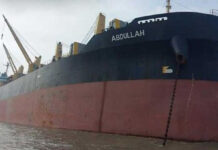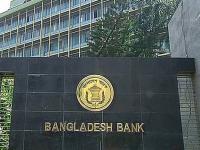
Inside the single room he shares with his wife and young child, Hasan Mahmud Forkan does not sleep easily. Some nights he hears the screams of the garment workers he tried to rescue from the wreckage of the Rana Plaza factory building. Or he dreams the bed itself is collapsing, sucking him down into a bottomless void.
A few miles away, at a rehabilitation center for the disabled, Rehana Khatun is learning to walk again. She lost both legs in the Rana Plaza collapse and worries that she is not improving because her prosthetic replacements are bulky and uncomfortable. She is only 20 and once hoped to save money so she could return to her village and pay for her own wedding.
“No, I don’t have that dream anymore,” she said, with a cold pragmatism more than self-pity. “How can I take care of a family?”
Eight months ago, the collapse of Rana Plaza became the deadliest disaster in the history of the garment industry, and many of the survivors still face an uncertain future. The shoddily constructed building pancaked down onto workers stitching clothes for global brands like Children’s Place, Benetton, C & A, Primark and many others. Workers earning as little as $38 a month were crushed under tons of falling concrete and steel. More than 1,100 people died and many others were injured or maimed.
But while the Rana Plaza disaster stirred an international outcry — and shamed many international clothing companies into pledging to help finance safety improvements in other Bangladeshi factories — the people most directly affected are still living without any guarantees of help or financial compensation.
Families who lost the wages of a son or daughter, husband or wife, are struggling.
Those who lost limbs, like Ms. Khatun, are uncertain if they will ever walk or hold things again. And many volunteer rescuers like Mr. Forkan and survivors are struggling to deal with debilitating emotional scars.
Today, Rana Plaza no longer exists. It is a gaping hole in a busy commercial street, mostly cleared of rubble, where rainwater has pooled into a small black lake. But the vacant space still exerts the potency of memory and loss. Banners demanding justice face the street. Sit-ins or small protests are sometimes held. Leftist parties have built a crude statue of a hammer and sickle.
There are also people, often hovering near the periphery, clutching official documents, proof of their loss, evidence of their claims for compensation. In a poor country like Bangladesh, a job in a garment factory, despite the low wages, is a financial toehold for many families. A daughter is sent to work to support her parents, or to pay to school her siblings.
Now it is the parents or siblings who come to the Rana Plaza site, trying to get attention and, they hope, financial assistance.
“We are a poor family,” said Monju Ara, 40, whose daughter Smriti, 17, died while working on the third floor of Rana Plaza. “That is why my daughter had to start work. Her wages helped us educate our younger children. Now we had to stop educating them.”
Ms. Monju Ara stood in a dirt alleyway beside the Rana Plaza site on a recent afternoon, as others soon appeared. One girl, Rahima, 9, was still carrying a “missing” poster for her brother. Another child, Smriti Mahmuda, 7, had lost her father, and her 15-year-old brother had taken a job in an embroidery factory to support the family. A rickshaw driver with the single name of Alauddin, 43, is now struggling to support his young daughter after his wife died in Rana Plaza.
“They always say I will get compensation,” he said, “but they don’t say when.”
Compensation remains a complicated and contested issue. Bangladesh’s government has made some modest short-term compensation payments to some victims. Families were given a one-time payment of $257 when they collected the body of a relative in the days after the collapse, and the government has established annuities for survivors who lost limbs — Ms. Khatun gets about $206 a month in interest, more than most others.
But much of the money donated to the government for the survivors and the families of the dead has not been released. Many of these claimants have been told that full compensation packages will be provided after the process of identifying all the dead is completed. A special committee appointed by the Bangladesh High Court has suggested individual compensation packages of roughly $25,000; lobbyists for factory owners are proposing a far lower figure. The final decision is expected to rest with the high court.
For now, most of the short-term compensation has come from the British chain Primark, which has been paying salaries for survivors and families of those who died. More recently, Loblaw, a Canadian retailer, announced that it, too, would step in to help with compensation.
The Bangladesh Garment Manufacturers and Exporters Association, the powerful industry trade group, has also provided compensation, according to some survivors who received a few months’ salary.
But the long-term picture remains muddled. Other companies have so far refused to participate in a long-term compensation package, including all of the American brands, but for many Rana Plaza survivors, the short-term compensation is already running out. Shukrani, who survived the collapse but lost a daughter, who was working on a different floor, is almost out of money.
“My other daughter had appendicitis,” she said. “I had to spend part of my money for her operation. Now I don’t know how I’ll survive.”
Down the road from Rana Plaza, at the Center for the Rehabilitation of the Paralyzed, Ms. Khatun and others spend their mornings trying to learn how to walk or hold a pen with prosthetics. The nonprofit organization has a long history of helping the disabled and is now helping several Rana Plaza survivors learn how to use the prosthetics provided by another donor.
But the prosthetics are a problem: One man, Saddam Hossain, 27, who was a salesman in a building adjacent to Rana Plaza, lost his right arm. He had been studying for a graduate degree in economics and, after his amputation, still took the test in June, with someone else writing his answers for him. Now he is trying to adjust to his mechanical prosthetic arm, which is clumsier than Western models.
“I’m an educated man,” he said. “I want to do a job.”
Ms. Khatun is grateful for her prosthetic legs but is also struggling with them. She has practiced for two months but finds them painful. Her legs were amputated above the knee, making it more difficult. She will need walking sticks, and she has decided to leave the chaos of the city and return to her village. There, though, the roads are muddy and difficult to traverse.
She had left the village after her mother tried to arrange her marriage. The cost of a wedding would have bankrupted her family, so she came to Savar and found work in Rana Plaza. She thought she could save up to pay for her own wedding and also educate her younger brothers.
“I dreamed that I could see my mother smiling,” she said. “Now it is meaningless to talk about what my dreams are. I cannot lead a life like normal people. I will have an unusual, different life.”
Before the Rana Plaza disaster, many of the workers were already living on the margins. Few had much education and most struggled to get by on the low wages. They were not qualified to do much else but work in a sewing factory. But now, for many, merely stepping back into a factory incites anxiety.
Mohammad Ujjal Hossain, 30, spent three days trapped under a wall of fallen concrete. When rescuers found him, he handed them his cellphone and told them to call his mother to tell her he was alive.
“Now, I’m not doing anything,” he said.
“I went to a factory to work as a line chief. I worked for a day, but I was filled with fear when I was inside the building. I worried that this building would also collapse. I quit after that day.”
And of all those whose lives are now entwined with Rana Plaza, it is the volunteer rescuers, ordinary people who rushed forward in a crisis, who have received no financial help at all. Mr. Forkan, 37, spent three weeks helping firefighters and soldiers pull bodies out of the rubble. He crawled into the wreckage and freed one woman by cutting an iron rod that pierced deep into her leg.
But when it was over, Mr. Forkan found it difficult to return to his ordinary life.
He is an electrician and regularly works in dangerous situations. But he finds it difficult to concentrate. He deliberately avoids the Rana Plaza site, detouring around it, and his wife often has to wake him when he shouts in his sleep.
“We need proper treatment to return to a normal life,” he said, expressing concern about what would happen to his family if he could no longer work. “This is my only way to earn money.”
Source: NYTimes









